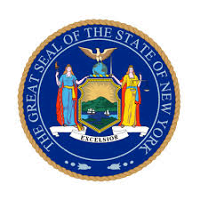
New York State Common Retirement Fund (CRF)
Portfolio level
Portfolio level – Portfolio decarbonisation reference target
Baseline date: 2022
Baseline performance: Percent of public assets aligned with 1.5-degree scenario is 13%
Target year(s): 2030 and 2040
Target(s): The CRF’s overarching quantified target is to reach 100% portfolio alignment with a 1.5-degree scenario or net-zero greenhouse gas emissions across the portfolio by 2040.
The CRF’s interim target is 50% of public securities to be aligned with a 1.5-degree scenario by 2030.
GHG scopes included: Coverage includes scope 1 and 2
Asset classes in scope: Public corporate securities held in the CRF’s public equity and fixed income asset classes, which covers over 50% of the CRF’s entire portfolio.
Methodology: The CRF’s portfolio alignment assessment uses a number of different data points, factors, and models, including companies’ historical emissions and reduction trends, transition strategies and capital expenditures, and emissions reduction goals, as well as public policy impacts and technological advances, to assess whether a company is aligned with a 1.5-degree scenario and on a trajectory to achieve net zero by 2040.
The CRF’s primary metric to measure progress toward net-zero is portfolio alignment with a 1.5-degree scenario, not a pure emissions reduction target.
Carbon emissions (reported and estimated) are a component of our 1.5-degree alignment target, but we view pure carbon-footprinting as an inherently backward-looking metric. Measuring the percentage of assets aligned with a 1.5-degree scenario is a more appropriate, forward-looking metric, that better measures our goal of having both our portfolio and the real economy align with net-zero by 2040.
While we will continue to measure the carbon footprint of the CRF’s public securities, we believe that it should not be our primary metric for measuring progress toward net-zero because it does not evaluate an issuer’s plans, policies and investments.
Portfolio level – Investment in climate solutions target
Quantitative target
Baseline date: 2018
Baseline performance: $7 billion committed to Sustainable Investment and Climate Solutions (SICS) Program in 2018.
Target date: 2030
Target year: $20 billion allocated to the SICS program, targeting 75% ($15 billion) to investments in climate solutions.
Methodology: The metric measures the total dollar amount committed to the CRF’s SICS Program that supports climate solutions by tallying the total commitment to three specific SICS themes: climate and environment, resource efficiency, and pollution and waste management.
Asset level
Asset level – Portfolio coverage target
Baseline date: 2022
Baseline performance: 13% in 2022 to date
Target date: 2030
Target: 50%
Asset classes in scope: Public corporate securities held in the CRF’s public equity and fixed income asset classes.
Data sources: Working with multiple consultants, analysts, and data providers, using proprietary modelling, research and datasets to assess assets’ alignment.
Asset level – Engagement threshold target
Baseline: Currently 13% of the CRF’s public securities meet our net zero aligned criteria
Target: For 2030, the CRF has set an interim goal of actively engaging with 50% of the public companies in our portfolio, which are in high-impact sectors (as defined by TCFD), on net-zero alignment.
Additional information
Methodology: The CRF’s interim goal is alignment of 50% of publicly traded assets with a 1.5-degree scenario by 2030, which is consistent with the IPCC’s stated carbon reduction goals necessary to limit global warming to 1.5 degrees by 2100.
Fossil fuel investment: The CRF’s Climate Action Plan and the transition risk assessments and minimum standards that we apply to energy sector investments are all derived from science-based policies and research.
The CRF has applied transition risk assessments and minimum standards to certain energy sector industries, including thermal coal mining, oil sands, and shale oil and gas, which inform prioritized engagements and investment decisions. The CRF will begin to evaluate integrated oil and gas companies in 2022.
For further information of Transition Assessment and Minimum Standards.
Operational emissions: The CRF’s investment staff are part of the New York State Office of the State Comptroller, which has a variety of initiatives to reduce operational emissions, including initiatives that focus on energy usage and efficiency in our buildings, travel and fleet improvements, and recycling across the organization. Energy efficiency improvements, such as LED lighting installation, garnered an Energy Star Rating of 85 for OSC’s headquarters at 110 State Street in Albany, New York in 2016.
New York State Common Retirement Fund (CRF) case studies